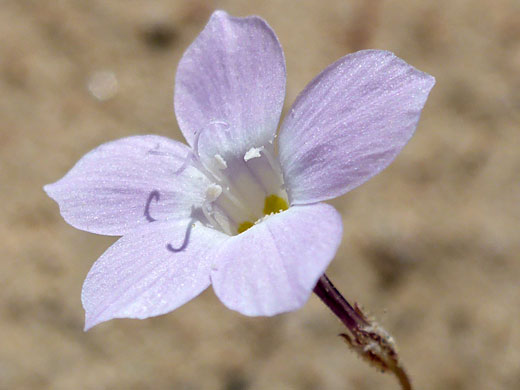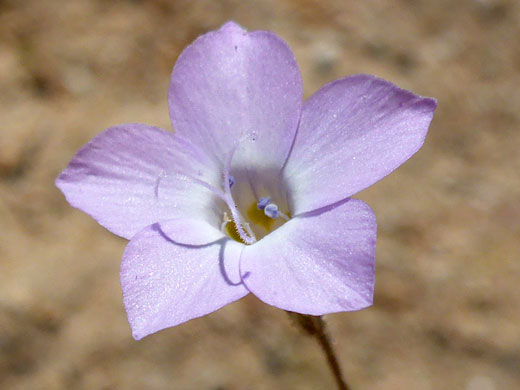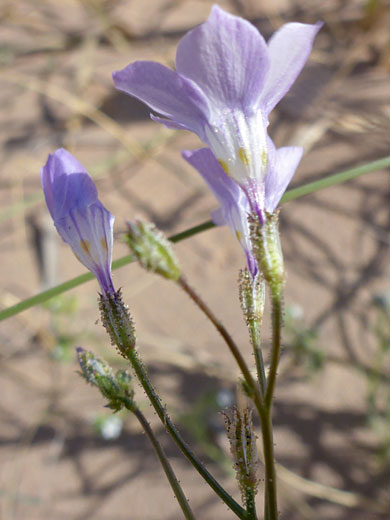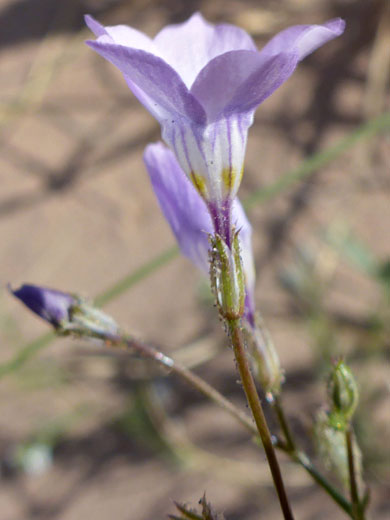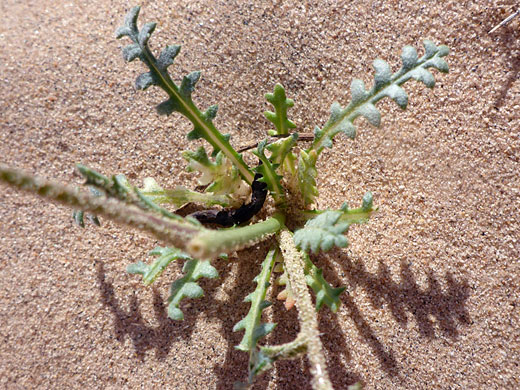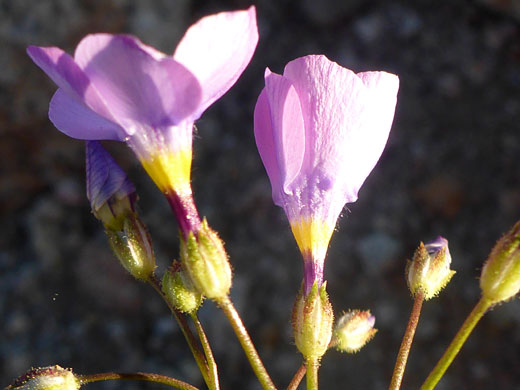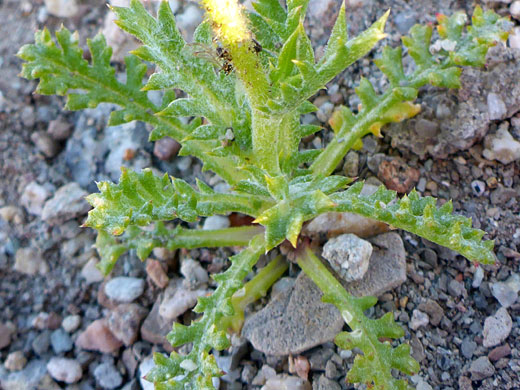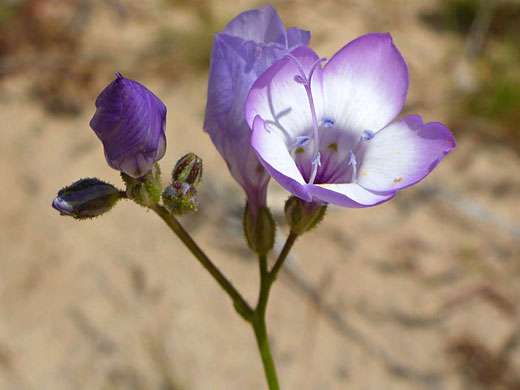Common name:
Showy gilia
Family:
Scientific name:
Gilia cana
Main flower color:
Range:
South California, south Nevada and northwest Arizona
Height:
Up to 13 inches
Habitat:
Flats and washes; open, sandy, granitic, limestone or gravelly locations, from from 1,000 to 7,000 feet
Leaves:
Once or twice pinnately lobed
Season:
March to June
Identifying characteristics of gilia cana include the glandular calyx, the wide corolla throat colored mostly white rather than purple, the style exserted well beyond the corolla lobes, and stamens generally of a similar length to the corolla lobes.
The corolla is relatively long, up to 1.3 inches, with a narrow, purple tube extending some way above the short (0.2 inch) calyx, expanding to a broad, quite long throat, which has yellow patches lower down and becomes pinkish-blue at the top. Corolla lobes are pale pink.
Plants may branch a few times, from the base. Stems have a sparse covering of glandular hairs towards the top, and generally woolly, non-glandular hairs near the base. Leaves are mostly basal, pinnately divided into quite well-separated lobes, which may be divided again. Lobes usually have a pair of small teeth along the sides, and a point at the apex. Leaves have a light-colored midvein, broad towards the base.
There are five subspecies (bernardina, cana, speciformis, speciosa, triceps), differentiated by characteristics of the pedicels, corolla and fruits.
The corolla is relatively long, up to 1.3 inches, with a narrow, purple tube extending some way above the short (0.2 inch) calyx, expanding to a broad, quite long throat, which has yellow patches lower down and becomes pinkish-blue at the top. Corolla lobes are pale pink.
Plants may branch a few times, from the base. Stems have a sparse covering of glandular hairs towards the top, and generally woolly, non-glandular hairs near the base. Leaves are mostly basal, pinnately divided into quite well-separated lobes, which may be divided again. Lobes usually have a pair of small teeth along the sides, and a point at the apex. Leaves have a light-colored midvein, broad towards the base.
There are five subspecies (bernardina, cana, speciformis, speciosa, triceps), differentiated by characteristics of the pedicels, corolla and fruits.
All Contents © Copyright The American Southwest | Comments and Questions | Contribute | Site Map


